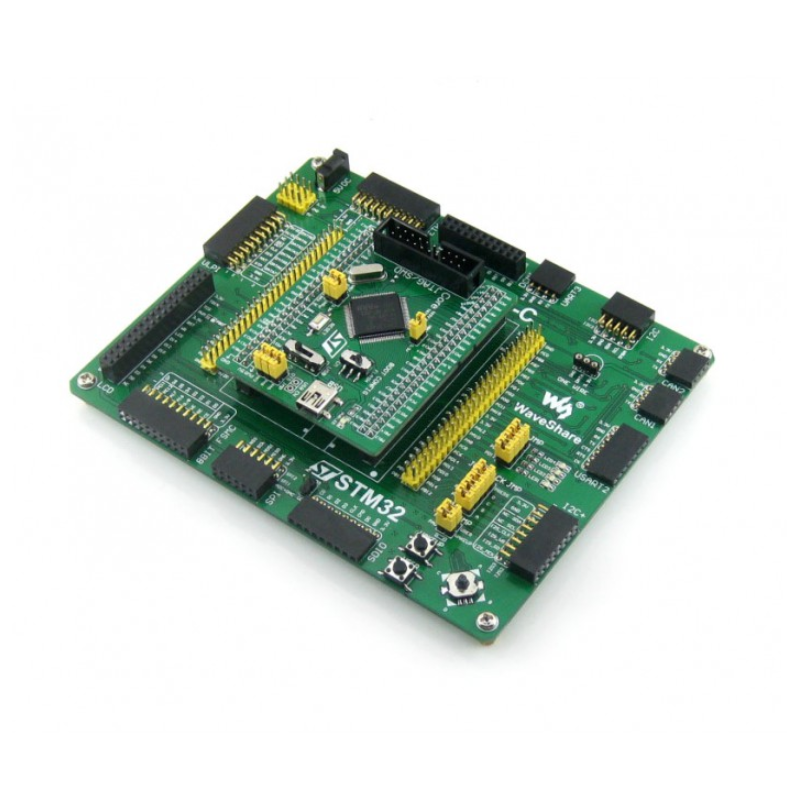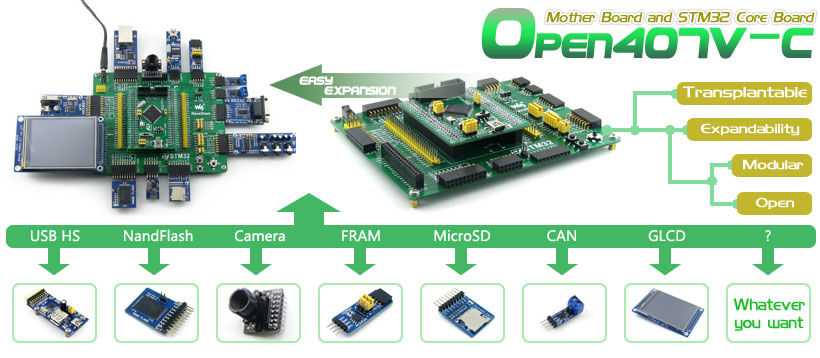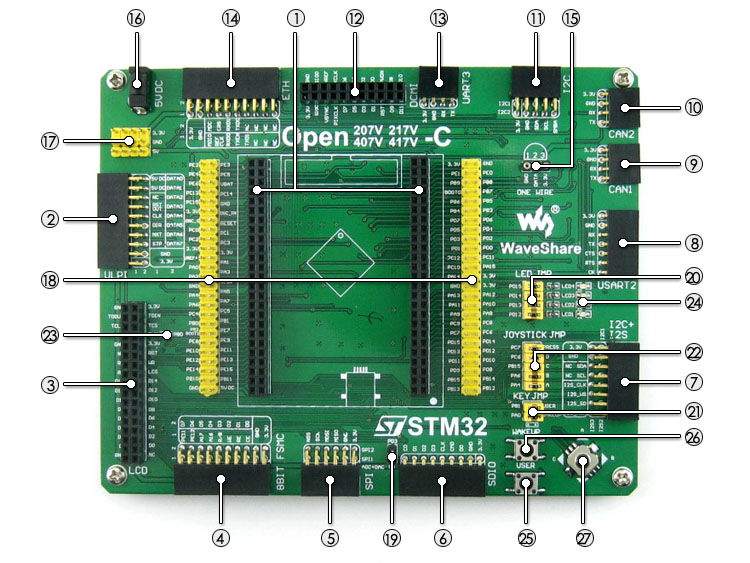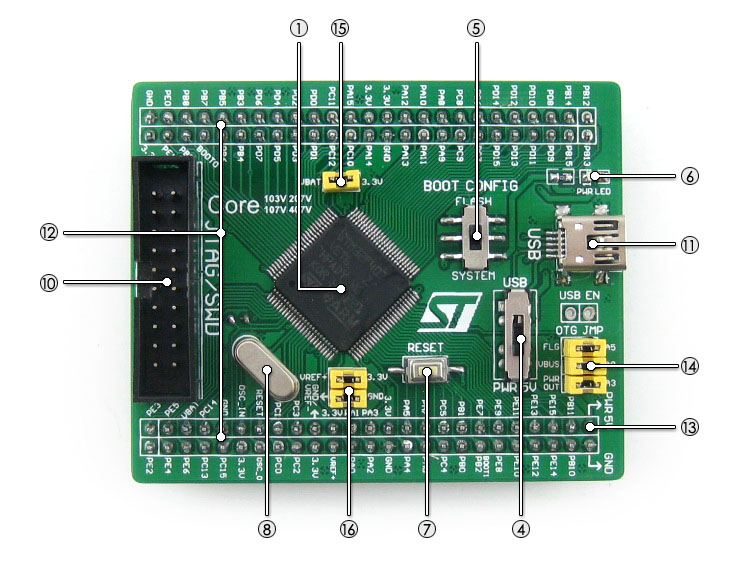

RLX COMPONENTS s.r.o. , Electronic Components Distributor.
RLX COMPONENTS s.r.o. , Electronic Components Distributor.

Open407V-C is an STM32 development board designed for the STM32F407VET6 microcontroller, consists of the mother board and the MCU core board Core407V.
The Open407V-C supports further expansion with various optional accessory boards for specific application. The modular and open design makes it the ideal for starting application development with STM32F4 series microcontrollers.

